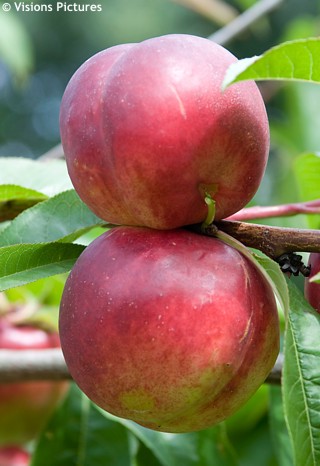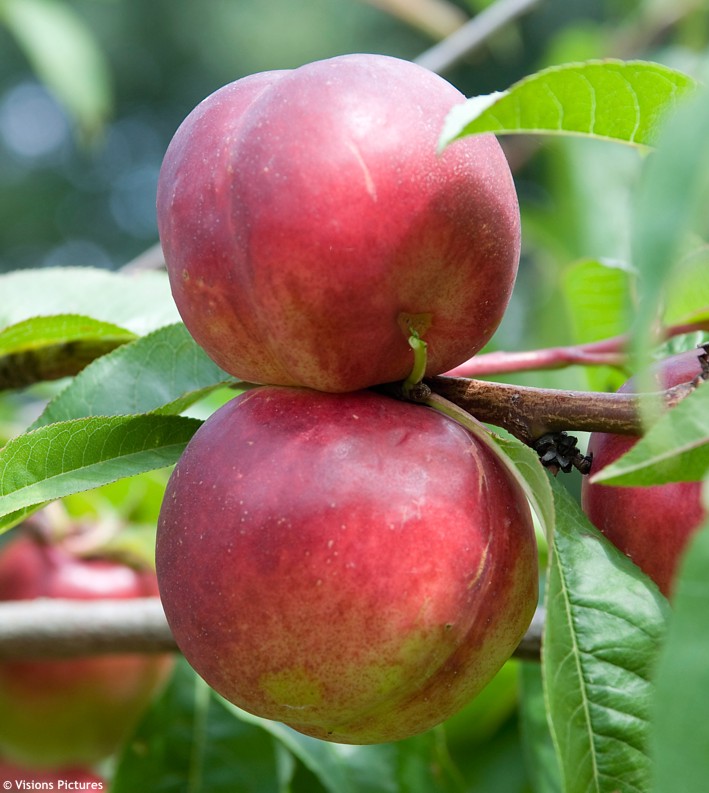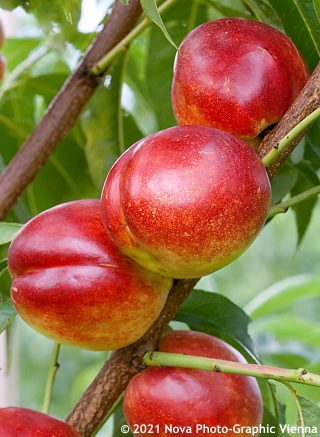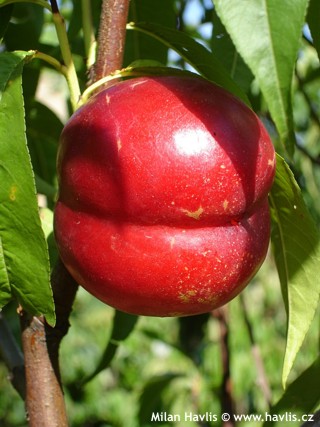Prunus persica var.nucipersica 'NECTARED' nectarine tree - late
size/type
small tree,small tree
usual height
3-3,5m
usual width
3-3,5m
leaves
deciduous broadleaf
colour of leaves
colour of flowers
location
full sun
USDA zone (lowest)
6b (down to -21°C)
winter protection
for zone 5+6

for zone 7

categorized
Description of the plant:
Nectared is an American nectarine tree variety that has been in trial cultivation since 1972. So far (until 2019) there have been 3 generations called by numbers 4, 6, and 9. Nectared is a late variety producing large, rounded fruit with strong, deep red to burgundy red, smooth and glossy skin. The flesh is yellow, firm, juicy, and sweet. Maturity is 10 days after Redhaven peach i.e. late August in C.E. Trees exhibit semi-vigorous growth and flowers are self-fertile. Nectarine trees are best suited for warmer parts of Central Europe, especially wine regions, city gardens with accumulated heat, and walled gardens protected from the worst winter winds. During cold winters and in case of significant temperature swings in late winter (night frost and strong sun during the day) we recommend stem protection (wrap it with jute or similar material) until the temperature settles down.
Nectarine trees like slightly alkaline, moist but well drained, and very fertile soil. Do not transplant bare-root trees in autumn, only in spring. Pruning is possible in early spring after flowering or in mid-late August after harvesting the fruit – reduce long branches to 30-50% of their size and remove weak ones. The best yield however is from an unpruned tree which grows naturally. Hardiness oscillates between -20 and -24°C (USDA zone 6a-6b) depending on how long the frosts last.
Last update 15-07-2019
QUICK PRICE OVERVIEW
CURRENTLY SOLD OUT
WANT TO TRY A SIMILAR PLANT?
















